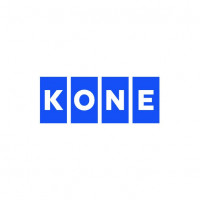-
Indonesia
Copyright © 2025 Powered by BCI Media Group Pty Ltd
Confirm Submission
Are you sure want to adding all Products to your Library?
Contact Detail

Once home to Finland’s national railway company, the offices of Helsinki’s distinctive central station have been transformed into a sumptuous hotel, with historic elements restored and placed back on show. The classic design incorporates low-energy and modernized elevators for a smooth-flowing visitor experience through the extraordinary building.
Helsinki’s central railway station buzzes with the coming and going of trains, buses and trams, and people flowing in all directions. But step through a grand wood and glass door at the side of the building and you’re into another world - the new Scandic Grand Central hotel.
"Our guests have given the hotel a great welcome, which proves that we successfully turned our concept into a reality: we’re an oasis of calm in the middle of Helsinki," smiles hotel manager Satu Järvelä.
"Once inside these thick stone walls, we want to transport our guests to another time so they can leave everyday life behind."
The iconic building was designed by architect Eliel Saarinen and completed in 1909 and is an instantly recognizable landmark for residents of the Finnish capital. It was occupied by Finland’s national railway operator for over a century until 2018, when hotel group Scandic took it over.


The conversion of the Jugendstil building – a branch of Art Deco originating in Germany – was overseen by Finland’s National Board of Antiquities, with NCC as the builder and the distinctive interior designed by architect Jaakko Puro.
"For the interior I aimed for the same things that Eliel Saarinen sought in his day: a modern, continental design which makes use of modern technology," Puro says.
Visitors are immediately struck by the hotel's palatial staircases, where restored columns and decorative paintings evoke Saarinen's simple and refined Art Deco style. But guests opting for one of the hotel's four customer elevators will experience modern technology which blends seamlessly with the hotel’s classic design.
For KONE, the customized implementation was a stimulating challenge.
"The elevator interiors were hand-made,” says Jan Stenman, sales manager at KONE. “It required us to plan carefully and co-operate closely with the developer, interior architect and the owner."
Interior designer Puro explains that the elevators are a combination of dark wood mirror panels at the bottom and dark mirrors at the top. The hotel's logo is carved into the stone tile floor while a digital wall-screen keeps travelers informed or allows them to admire images of the chefs' creations.
Yet behind the classic exterior, the installed KONE DX Class MonoSpace® 500 elevators are up to 90% more energy efficient than the equivalent 1990s model.
"People often describe the elevator as like being in an Art Deco New York hotel,” says hotel manager Satu Järvelä. “It’s one of those spots in the hotel where every visitor takes out their camera, an 'Insta-moment',"
"When we host fashion shoots, the elevator will normally be the place they choose to photograph something like a spectacular evening gown,” Järvelä adds. “It has a luxurious simplicity."

Historical features have been restored and brought back on show throughout the Scandic Grand Central. This includes some 4,000 hand-restored window boxes, signage recovered from under layers of wallpaper, and even the old vault inside what was the VR payroll office.
The dent of the chairman’s gavel is still visible in the old boardroom table.
There’s also a 112-year-old elevator - the building’s “grand old lady," according to Järvelä.
The German-made car is one of the oldest in the Finnish capital and has been modernized by KONE, with LED lights replacing the halogen ones to bring energy savings.
The elevator is currently restricted to staff use although tours for the public are planned.

Alongside its 491 rooms, the Grand Central houses Finland’s longest corridor, which at over 150 meters (500 ft) was designed to stretch the full length of the station platform.
"Due to the long distances in the hotel, having fast and reliable lifts is critical for the logistics of room service and cleaning," says Järvelä.
Four staff elevators allow for the flow of employees and goods, in addition to four customer elevators and one piccolo elevator for suitcases.
In the wake of the pandemic, hygiene and virus control have been carefully addressed, including in the elevators, where the innovative KONE AirPurifier system has been discreetly installed.
"AirPurifier uses photocatalytic oxidation to remove pollutants, making the elevator air cleaner and fresher,” explains Jan Stenman from KONE. “In addition to dust and other unwanted particles, it removes viruses, bacteria and odors," marking one more way that the hotel is a haven for relaxation and escape.
For more intriguing projects, check out KONE's profile on Archify!



